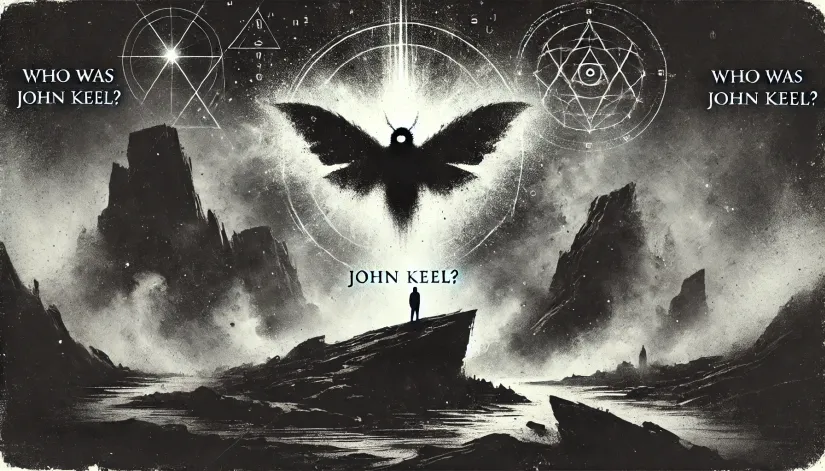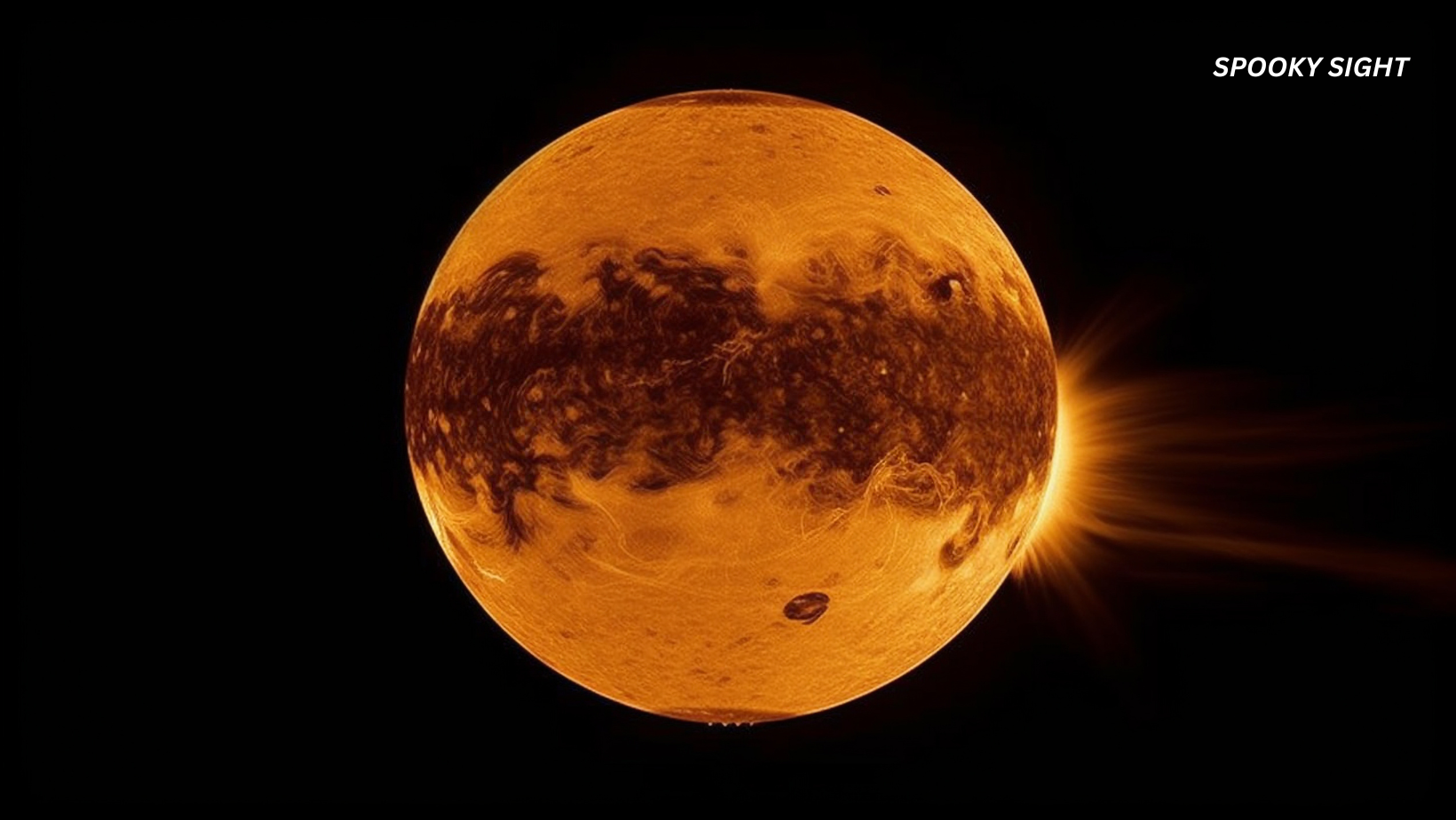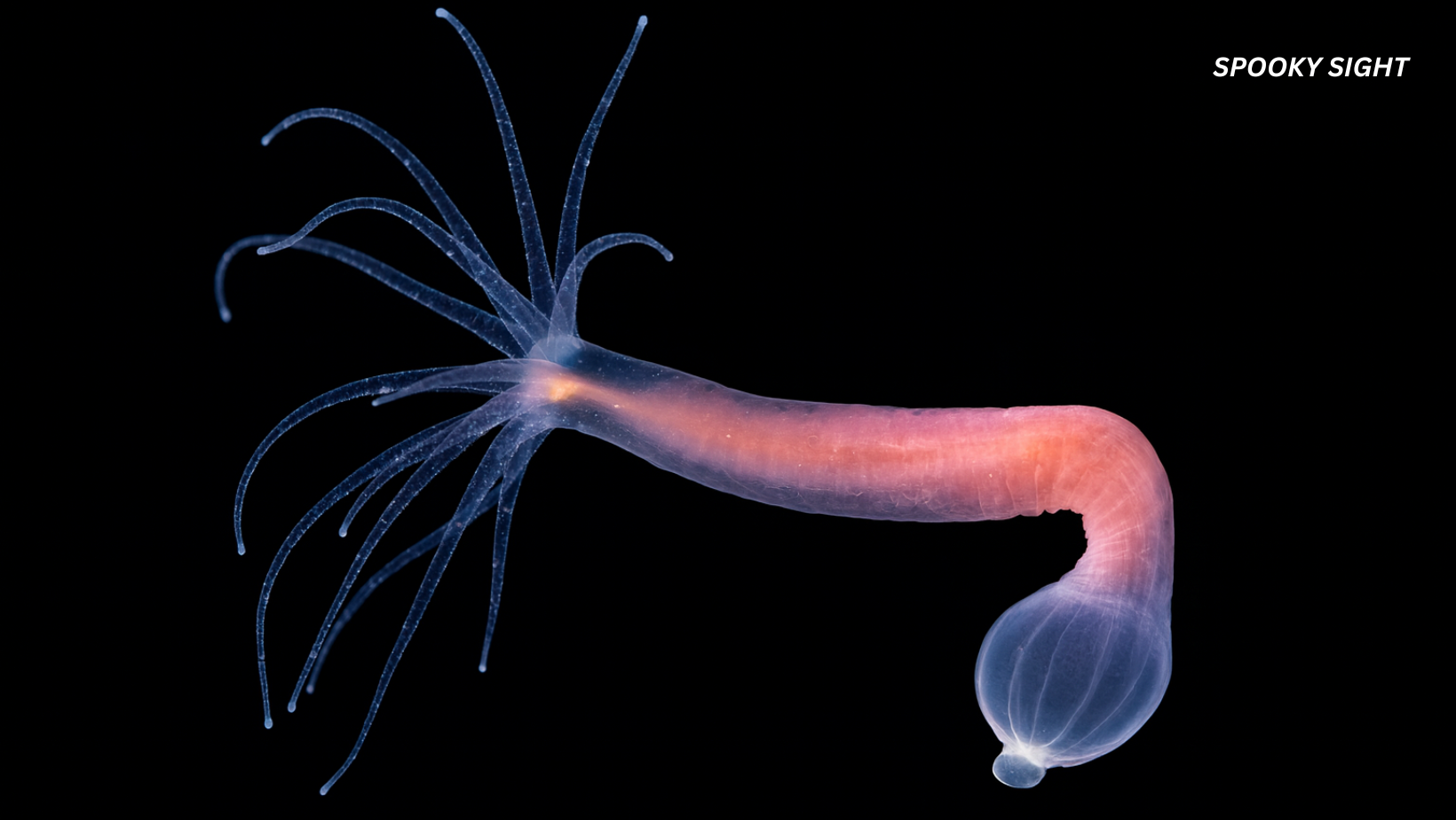John Keel was a journalist, author, researcher, and a true pioneer of the weird and unexplained. You might’ve heard of him thanks to his obsession with the Mothman—a creepy, winged creature that haunted a small West Virginia town. But that was just the tip of the iceberg.
Keel studied all sorts of cryptids and UFO phenomena in the 1960s and 1970s. His theories and investigations put Mothman, the Men in Black, Indrid Cold, and other cryptids and UFO events on the radar.
However, his work was not without controversy. He was even accused of fabricating his stories. But even with all the controversy, Keel remains, for sure, one of the most influential paranormal investigators of the 20th century.
In this article:
Early Life
John Keel (born Alva John Kiehle on March 25, 1930, in Hornell, New York) had an unusual upbringing. His parents separated when he was young. So, he ended up being raised by his grandparents.
His grandfather worked for the railroad, and his grandmother kept things running at home. It was a simple yet beautiful life. But that didn’t stop Keel’s imagination from running wild.
Keel had a curious streak from a young age. He was always adventurous, always looking for something beyond the ordinary. He loved stories of explorers and daring adventurers—it lit a fire in him to go out and find the unknown for himself. Later, these skills became the foundation of his life and career.
In fact, he didn’t waste any time getting into writing. He started with short stories (as most writers do) and was heavily influenced by writers like H.G. Wells and Jules Verne. It’s no wonder he ended up obsessed with the paranormal.
But he didn’t get there right away. He started with all sorts of writing. Short stories, articles, and small pieces for the local newspapers. All that work was the foundation (and the experience) he needed to start focusing on what he truly loved: the paranormal.
Career Journey
By the 1950s, John Keel was already expanding his reach. He moved up from small local newspapers to more relevant magazines like “Flying Saucer Review,” “Fate,” and “Saga.” And, most importantly, he switched from random articles to more UFO and ghost/haunting-related stories.
Military Service
In the 1950s, John Keel served in the U.S. Army. He was stationed in Frankfurt, Germany, where he worked for Armed Forces Radio.
This new job was significant for his later broadcasting and screenwriting career. It was an excellent opportunity for him to learn how to write scripts, produce segments, and deliver broadcasts. Plus, the military experience opened his eyes to new cultures and myriad new stories to explore.
Related: 16 Lesser-Known Mothman Facts: From Curses to UFO Connections
While stationed in Germany, John Keel heard about all sorts of strange cryptid sightings and paranormal phenomena across Europe. Here, he realized supernatural events weren’t just local or confined to the United States. They were happening all over the world.
He collected these stories, which convinced him that supernatural events weren’t just local—they were happening all over the world.
It was a life-changing realization. It defined all of John Keel’s future work. It shaped his unique investigative approach. And it set the stage for his new career as a paranormal investigator.
TV and Screenwriting
At the end of his short military career, Keel returned to the U.S. and started working in television. He started with small contributions to TV programs (like “The Steve Allen Show” and “The Tonight Show”) and several children’s programming.
However, Keel launched into more serious screenwriting soon after, working on scripts for TV shows (like “Lost in Space”) and short films, teaming up with producers like Irwin Allen and writers like Rod Serling.
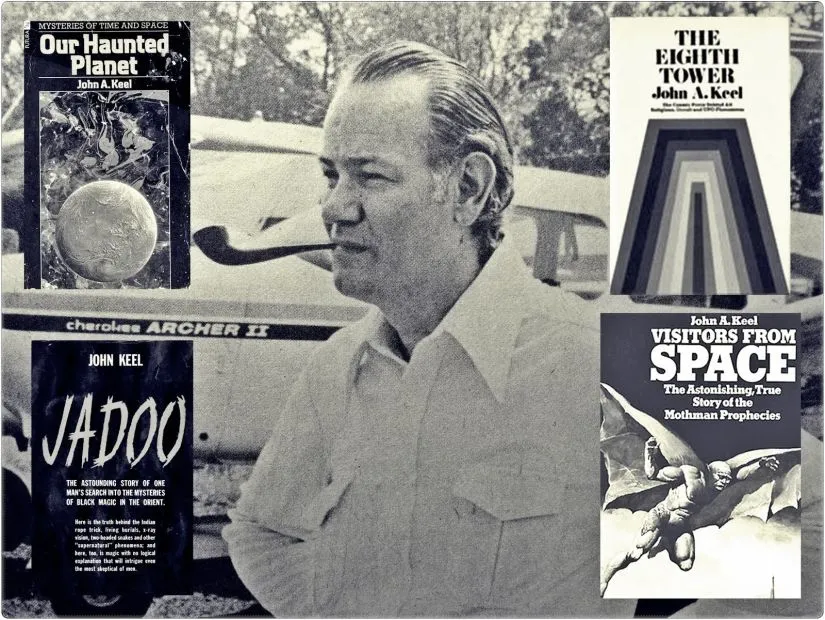
Paranormal Investigations
John Keel is perhaps best known for investigating the Mothman sightings in Point Pleasant, West Virginia, between 1966 and 1967.
The Mothman Phenomenon
So what were these “Mothman sightings”? Well, the whole story is bizarre… to say the least.
Between 1966 and 1967, residents of Point Pleasant reported encounters with a giant, winged monster with glowing red eyes. The strange creature was scaring the heck out of everyone.
John Keel heard about what was happening in and around Point Pleasant. In late 1966, he traveled to the town to investigate the sightings. However, he didn’t just focus on the cryptid.
He also documented multiple UFO events, strange lights in the sky, and mysterious phone calls (where a creepy, robotic voice was transmitting cryptid messages). All presumably related to the cryptid sightings.
Keel remained in Point Pleasant for several months. During this time, he got in touch with many locals and built close relationships with witnesses. He spent long hours interviewing each one of them and meticulously recording every single experience.
Keel’s investigation into Mothman culminated in his 1975 book, “The Mothman Prophecies,” which compiled firsthand accounts with interviews from locals.
Most importantly, in “The Mothman Prophecies,” John Keel explored the potential link between the sightings (and other strange paranormal phenomena) and the tragic collapse of the Silver Bridge on December 15, 1967, which killed 46 people.
The book became popular and was adapted into a 2002 film starring Richard Gere.
Other UFO and Supernatural Research
In addition to Mothman, Keel extensively researched UFO sightings and other supernatural occurrences.
One example is his investigation into the mysterious “Men in Black.” In 1967, he published an article in “Saga” magazine in which he theorized that the “Men in Black” were likely connected to UFO encounters. How so? Because they often appeared to witnesses to warn them against speaking about their experiences.
Now, here’s the thing: Keel rejected the extraterrestrial hypothesis (the idea that UFOs were spacecraft from other planets). Instead, he proposed a new concept: “ultraterrestrials.” Entities that exist alongside humanity but could take on different forms to interact with us.
According to John Keel, these beings were behind most paranormal events throughout history. From UFO sightings to poltergeists.
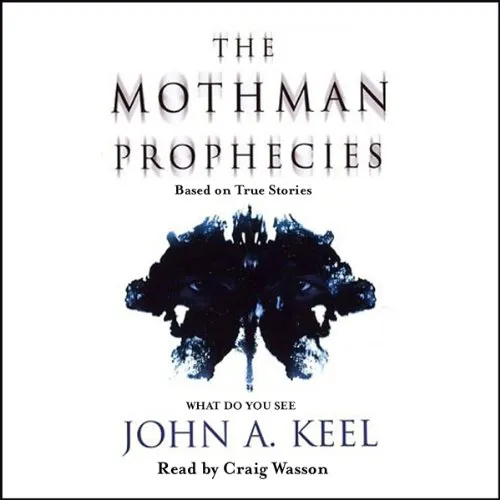
Major Works and Publications
John Keel wrote several books on paranormal investigations. However, “The Mothman Prophecies” remained his most famous work. Other notable works include “Operation Trojan Horse” (1970), “The Eighth Tower” (1975), and “Our Haunted Planet” (1971).
Here is a complete list of all John Keel’s books:
| Title | Year | Publisher | Description |
|---|---|---|---|
| Jadoo | 1957 | Julian Messner | Keel’s account of his travels in Egypt and India, exploring fakirs, magicians, and the unknown. |
| The Fickle Finger of Fate | 1966 | Fawcett Publications | A humorous novel that showcases Keel’s storytelling talent beyond the paranormal. |
| Operation Trojan Horse | 1970 | Manor Books | Analysis of UFO sightings as interconnected paranormal phenomena rather than extraterrestrial. |
| Strange Creatures From Time And Space | 1970 | Fawcett Publications | A look at various cryptid sightings and paranormal creatures from around the world. |
| Our Haunted Planet | 1971 | Manor Books | Discusses various mysterious occurrences and the idea of non-human intelligences. |
| The Flying Saucer Subculture | 1973 | Paperback Library | Examination of the cultural impact and societal implications of the UFO phenomenon. |
| The Mothman Prophecies | 1975 | Saturday Review Press/E.P. Dutton | Investigation into the Mothman sightings and related strange phenomena in Point Pleasant, WV. |
| The Eighth Tower | 1975 | Saturday Review Press/E.P. Dutton | Explores the concept of a hidden force influencing human history and paranormal activity. |
| Disneyland of the Gods | 1988 | Amok Press | Keel’s exploration of the absurdities and mysteries of paranormal phenomena. |
| The Best of John Keel | 2006 | Galde Press | A collection of Keel’s Fate Magazine articles, showcasing his best work on the paranormal. |
| Flying Saucer to the Center of Your Mind | 2013 | Phenomenon Books | Selected writings of John A. Keel focusing on UFOs and other paranormal topics. |
| The Outer Limits of the Twilight Zone | 2013 | Phenomenon Books | Selected writings of John A. Keel, exploring the stranger side of reality. |
| Searching For the String | 2014 | New Saucerian Press | A collection of Keel’s writings on his investigations and theories about the paranormal. |
| The Great Phonograph in the Sky | 2015 | New Saucerian Press | Selected writings of Keel discussing various supernatural and paranormal events. |
| The Perspicacious Percipient | 2015 | New Saucerian Press | How to investigate UFOs and other paranormal phenomena, with insights from Keel’s experiences. |
| The Passionate Percipient | 2015 | New Saucerian Press | Illusions Keel has known and loved, reflecting on his paranormal research. |
| Pursuing the Addenda | 2016 | New Saucerian Press | Supernatural reports from Keel’s investigations, covering diverse paranormal topics. |
| Articles for Fate, Flying Saucer Review, Saga | Various | Various | Numerous articles on UFOs, cryptids, and other paranormal phenomena. |
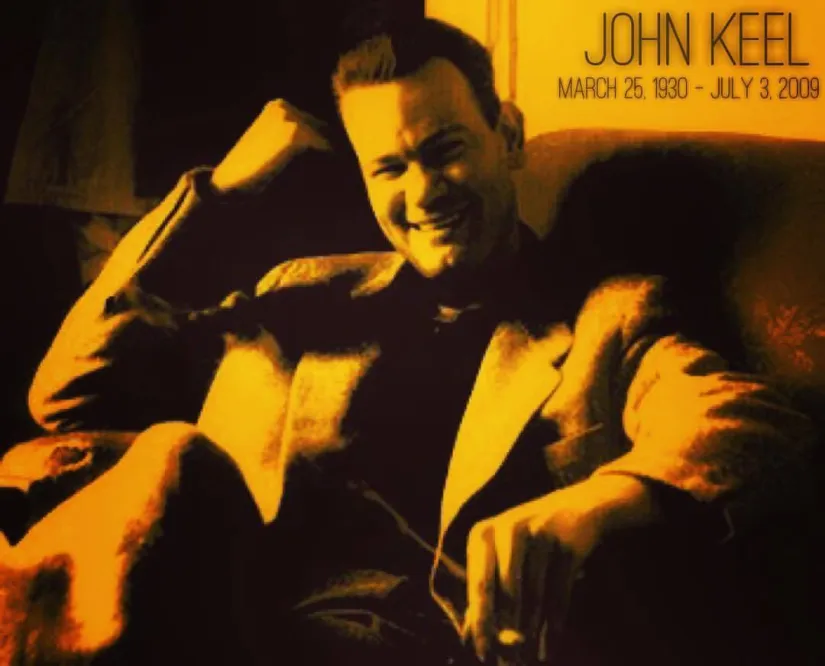
Personal Beliefs and Controversies
As we mentioned above, John Keel completely rejected the extraterrestrial hypothesis. Instead of believing that UFOs were piloted by beings from other planets, he argued that these phenomena were related to psychic events or interdimensional beings (the “ultraterrestrials”). His views made him a controversial figure.
For example, J. Allen Hynek and Jacques Vallée (two of the most prominent UFO researchers) found Keel’s rejection of the extraterrestrial hypothesis challenging. They felt that the idea of interdimensional beings (instead of a more scientifically tangible UFO phenomenon) was too far-reaching.
The whole concept of “ultraterrestrials”—beings capable of manipulating human perception and taking on different forms—was also controversial. It challenged the straightforward idea of physical extraterrestrial visitors.
Related: Who or What Was Indrid Cold: Alien Visitor or Paranormal Entity?
Many also criticized John Keel for not supporting his ideas with empirical evidence. Skeptics argued that Keel relied too much on anecdotal accounts and subjective experiences.
In the May/June 2002 issue of “Skeptical Inquirer,” journalist John C. Sherwood (a former associate of UFO researcher Gray Barker) analyzed private letters between Keel and Barker from the time of Keel’s Mothman investigation.
In the article “Gray Barker’s Book of Bunk,” Sherwood reported significant differences between what Keel wrote during his investigation and what he wrote in his book about the Mothman reports. This raised questions about the book’s accuracy.
Sherwood also noted that Keel, known for writing humorous and outrageous letters, refused to clarify these differences.
Legacy and Impact
John Keel’s work profoundly impacted the study of paranormal phenomena and cryptids. His investigations into Mothman and his theories about ultraterrestrials influenced countless other paranormal researchers.
Most importantly, Keel’s work helped bridge the gap between traditional UFOlogy and broader paranormal research, suggesting that these phenomena were interconnected in complex ways.

